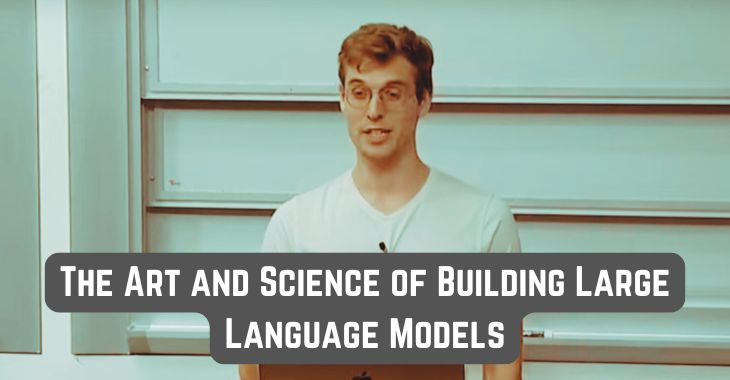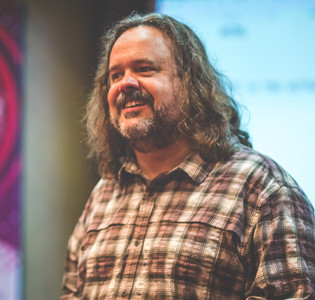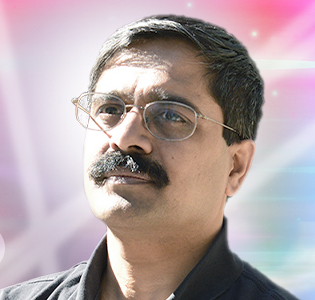
“Once again Saltmarch has knocked it out of the park with interesting speakers, engaging content and challenging ideas. No jetlag fog at all, which counts for how interesting the whole thing was."
Cybersecurity Lead, PwC

Large Language Models (LLMs) like GPT-4, Claude, and others have been at the forefront of AI innovation, revolutionizing industries ranging from healthcare to customer service. But what goes into creating these powerful systems? Yann Dubois, a PhD scholar at Stanford, recently delivered a dense, insightful lecture in the CS229 course titled Building Large Language Models. The lecture offers a comprehensive dive into the methodologies that enable LLMs to perform their seemingly magical feats. Here’s a detailed breakdown of the key concepts discussed, tailored for AI practitioners and enthusiasts.
The journey of building an LLM begins with pretraining, the phase where the model learns the foundational aspects of human language. During this stage, the model predicts the next word in a sentence using vast amounts of data. However, Yann Dubois emphasized that data quality trumps quantity.
Why Data Quality Matters: while sheer volume of data is necessary, noisy or irrelevant data can harm the model’s ability to generate coherent and meaningful outputs. Models trained on diverse, high-quality datasets—such as well-curated books, articles, and conversations—perform better across tasks.
Language Modeling Task: the model is presented with a sequence of words and tasked to predict the next word. This simple yet effective task enables it to learn grammatical rules, semantic relationships, and contextual understanding.
Challenges in Pretraining: one significant challenge is domain diversity. If the training data lacks examples from specific fields (e.g., medicine or law), the model’s performance in those domains will suffer. Fine-tuning (discussed later) can mitigate this.
Key Takeaway: pretraining creates a linguistically capable model, but its real-world utility depends on the quality and diversity of the training data.
After pretraining, the raw model may possess technical proficiency but lack alignment with human preferences, values, or specific applications. This is where post-training alignment comes into play. Dubois described two critical techniques:
1. Supervised Fine-Tuning (SFT): Fine-tuning is the process of training the model on task-specific data. For example:
This step helps adapt the general-purpose model for specialized use cases.
However, SFT alone does not guarantee alignment with human preferences.
2. Reinforcement Learning with Human Feedback (RLHF): This technique takes alignment a step further by incorporating human feedback to guide the model’s outputs. The process involves:
Example Use Case: OpenAI uses RLHF extensively for models like ChatGPT, ensuring they not only answer correctly but also in a conversational, user-friendly manner.
Why Alignment Matters: Misaligned models can generate technically accurate but contextually inappropriate or even harmful responses. Alignment ensures models are useful, ethical, and aligned with societal norms.
Training LLMs requires significant computational resources, but modern techniques have made it feasible without spiraling costs. Yann Dubois highlighted several advancements in scaling and efficiency:
1. 16-Bit Precision Training: Using lower precision (e.g., 16-bit instead of 32-bit) reduces computational overhead while maintaining model performance. This optimization is widely used in frameworks like TensorFlow and PyTorch.
2. Optimized GPU Utilization: Training LLMs at scale involves distributing workloads across multiple GPUs. Advanced techniques like data parallelism and model parallelism ensure efficient GPU utilization:
3. Sparse Models: Rather than activating all neurons in a network, sparse models selectively activate only the most relevant ones. This significantly reduces computational requirements.
4. Infrastructure Optimizations: Companies like NVIDIA and Google Cloud have introduced hardware specifically optimized for LLM training, such as NVIDIA’s A100 and H100 GPUs. These systems reduce energy consumption and speed up training.
Impact on the Industry: These optimizations have democratized LLM training. Organizations no longer need to be trillion-dollar tech giants to train state-of-the-art models.
Yann Dubois concluded with actionable insights for AI practitioners looking to build or fine-tune LLMs:
1. Prioritize High-Quality Data: Cleaning and curating training data is one of the most impactful steps.
2. Invest in Alignment: A technically proficient model is not enough; aligning it with user needs and societal values is critical.
3. Optimize for Efficiency: Leverage advancements in hardware and training techniques to control costs.
4. Experiment with Fine-Tuning: Even if pretraining is out of reach, fine-tuning open-source LLMs like GPT-J or LLaMA can deliver excellent results for specialized tasks.
The lecture also touched on the future of LLM development. As models grow larger, Dubois speculated that modular architectures—where smaller, specialized models collaborate—may replace monolithic designs. Additionally, the rise of multimodal models, which combine text, image, and video processing, promises exciting new applications.
Stanford’s lecture on “Building Large Language Models” offers invaluable insights into the technical and strategic considerations behind LLM development. From pretraining on high-quality datasets to fine-tuning and optimizing at scale, the process is both art and science. As LLMs continue to evolve, the balance between technical innovation, cost-efficiency, and ethical alignment will define the next chapter in AI.
For those looking to dive deeper, watch the full lecture here:
Stanford CS229: Building Large Language Models (LLMs)

“Once again Saltmarch has knocked it out of the park with interesting speakers, engaging content and challenging ideas. No jetlag fog at all, which counts for how interesting the whole thing was."
Cybersecurity Lead, PwC

“Very much looking forward to next year. I will be keeping my eye out for the date so I can make sure I lock it in my calendar."
Software Engineering Specialist, Intuit

“Best conference I have ever been to with lots of insights and information on next generation technologies and those that are the need of the hour."
Software Architect, GroupOn

“Happy to meet everyone who came from near and far. Glad to know you've discovered some great lessons here, and glad you joined us for all the discoveries great and small."
Web Architect & Principal Engineer, Scott Davis

“Wonderful set of conferences, well organized, fantastic speakers, and an amazingly interactive set of audience. Thanks for having me at the events!"
Founder of Agile Developer Inc., Dr. Venkat Subramaniam

“What a buzz! The events have been instrumental in bringing the whole software community together. There has been something for everyone from developers to architects to business to vendors. Thanks everyone!"
Voltaire Yap, Global Events Manager, Oracle Corp.